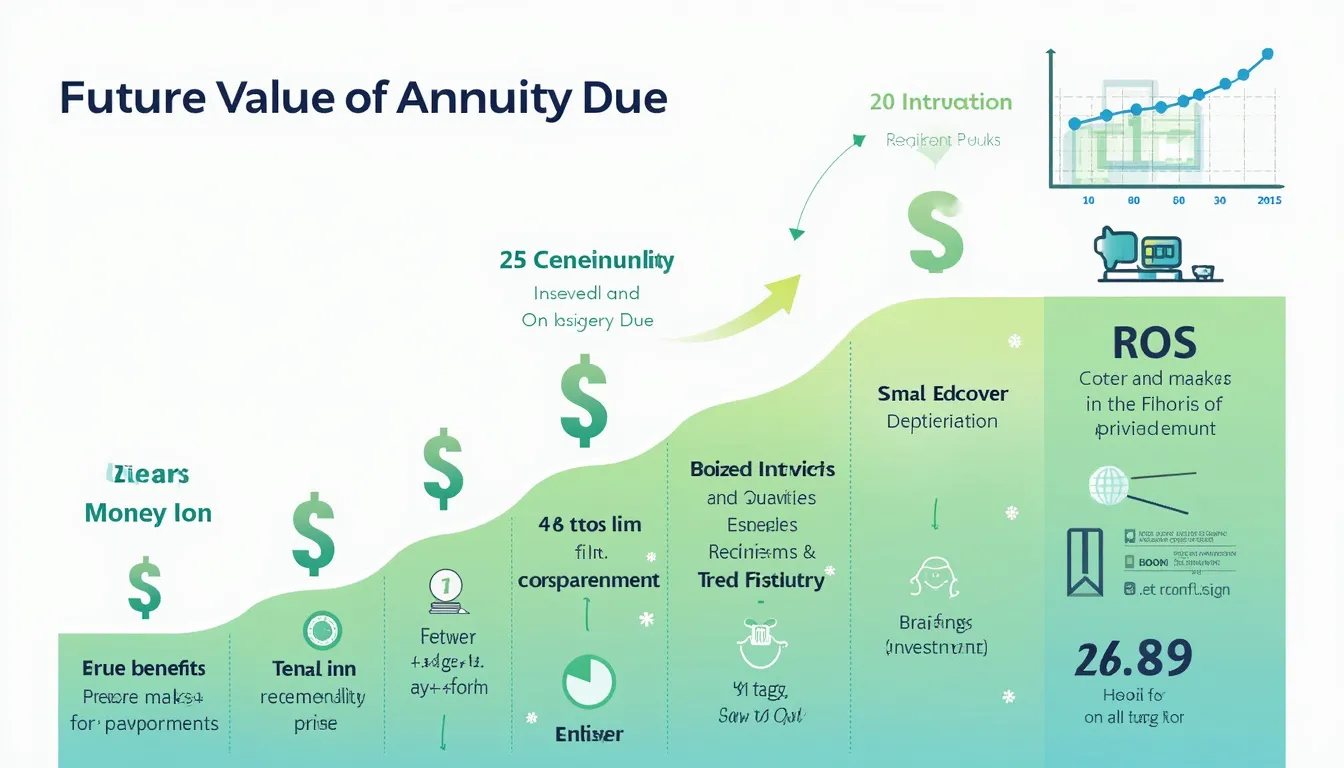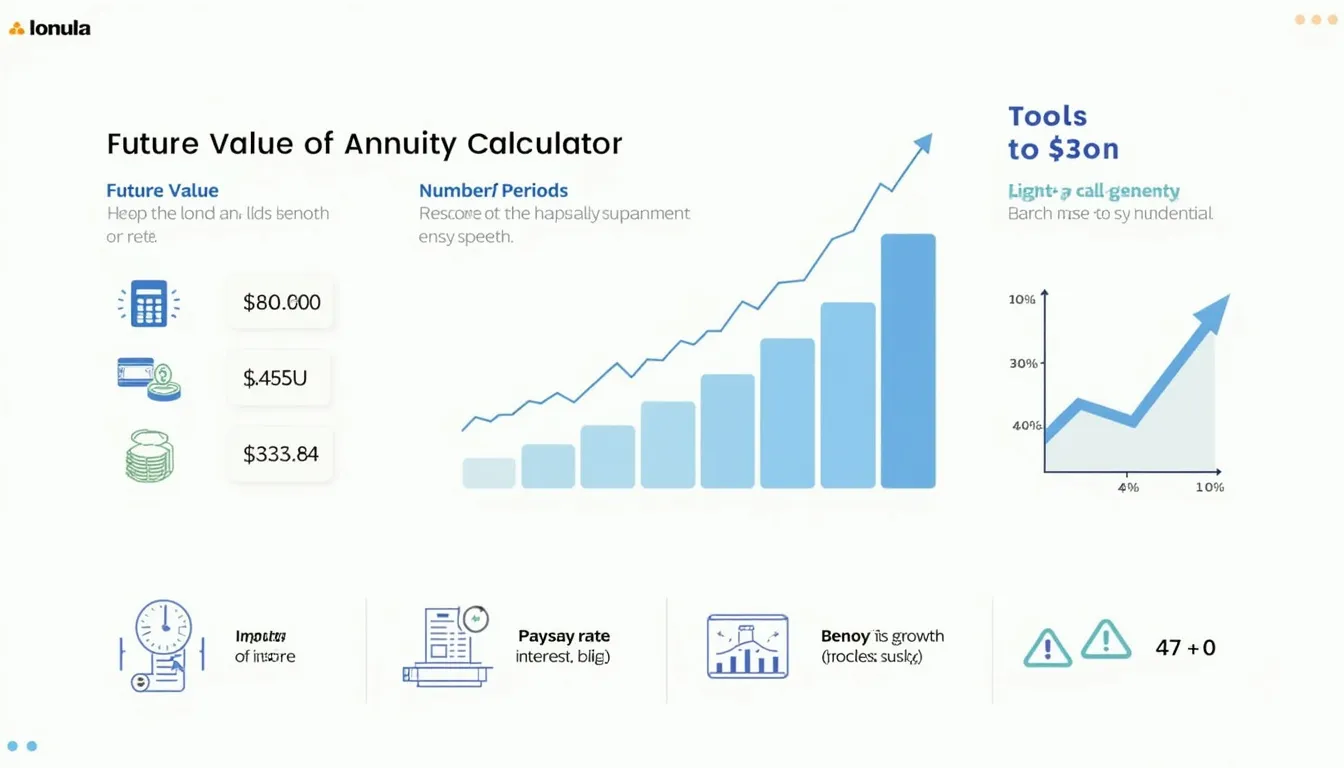Future Value of Annuity Due Calculator
Is this tool helpful?
How to use the tool
- Periodic Payment. Type the amount deposited at each period’s start.
Example A: $500 weekly.
Example B: $3,000 annually. - Rate per Period (%). Enter the interest or return that matches your payment frequency.
Example A: 0.65 % per week.
Example B: 5 % per year. - Number of Periods. Count how many equal payments you will make.
Example A: 120 weeks (≈ 2.3 years).
Example B: 15 years. - Press “Calculate”. The result shows the future value of an annuity due—payments at period start.
Formula the calculator uses
Future value of an annuity due:
$$FV_{AD}=P(1+r)\, rac{(1+r)^{n}-1}{r}$$
- P = periodic payment
- r = rate per period (decimal)
- n = number of periods
Worked examples
- Example A. $500, r = 0.0065, n = 120 ⇒ FV ≈ $91,032.
- Example B. $3,000, r = 0.05, n = 15 ⇒ FV ≈ $67,971.
Quick-Facts
- Annuity-due payments grow about 4-6 % faster than ordinary annuities (Investopedia, 2023).
- Formula appears in CFA Level I Curriculum, Quantitative Methods (CFA Institute, 2022).
- U.S. retirement accounts compound tax-deferred until withdrawal (IRS Pub 590-B, 2023).
- Average 10-year U.S. Treasury yield was 3.9 % in 2023 (U.S. Treasury, 2024).
- SEC explains that small rate changes greatly influence long-term compounding (SEC Investor.gov, 2024).
FAQ
What is an annuity due?
An annuity due is a stream of equal payments made at each period’s beginning, earning one extra compounding cycle (Investopedia, 2023).
Why must the rate match the payment frequency?
A mismatched rate distorts growth estimates; align monthly payments with a monthly rate, annual payments with an annual rate (SEC Investor.gov, 2024).
How do I adjust the result for inflation?
Subtract expected inflation from the nominal rate to get a real rate, then rerun the calculation (Bureau of Labor Statistics, 2024).
Can I use the calculator for loan payments?
Yes, if the loan requires payments at period start; however, it will show balance growth, not amortization (Page title: “Loan vs. Annuity”, bankrate.com).
What happens if the rate is zero?
A zero rate removes the compounding term, so future value equals payment × periods because $$ rac{(1+0)^n-1}{0}$$ simplifies to n.
Are the outputs taxable?
Tax depends on account type; traditional IRAs tax withdrawals, Roth IRAs do not after conditions are met (IRS Pub 590-B, 2023).
How precise is the calculator?
Results round to two cents; underlying math uses double-precision floats, accurate to ≈1 × 10⁻¹⁵ (IEEE 754 standard).
Where are annuity-due schedules common?
They appear in lease prepayments and retirement savings plans where deposits precede each period (FASB ASC 842, 2023).
Important Disclaimer
The calculations, results, and content provided by our tools are not guaranteed to be accurate, complete, or reliable. Users are responsible for verifying and interpreting the results. Our content and tools may contain errors, biases, or inconsistencies. Do not enter personal data, sensitive information, or personally identifiable information in our web forms or tools. Such data entry violates our terms of service and may result in unauthorized disclosure to third parties. We reserve the right to save inputs and outputs from our tools for the purposes of error debugging, bias identification, and performance improvement. External companies providing AI models used in our tools may also save and process data in accordance with their own policies. By using our tools, you consent to this data collection and processing. We reserve the right to limit the usage of our tools based on current usability factors.







